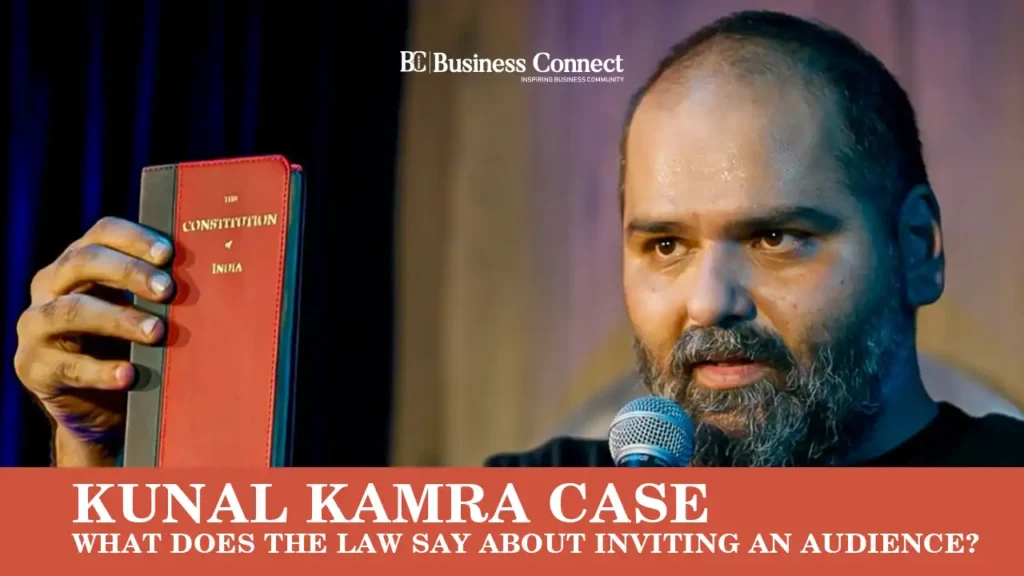Kunal Kamra Case: BookMyShow Faces Pressure Amid Free Speech Controversy
The Incident and Its Fallout
The controversy erupted after Kamra uploaded a video of his performance on March 24, 2025, to YouTube, featuring a satirical song that indirectly criticized Maharashtra Deputy Chief Minister Eknath Shinde, alluding to him as a “gaddar” (traitor) over his 2022 rebellion against Uddhav Thackeray. While Kamra refrained from naming Shinde explicitly, the performance provoked outrage from Shinde-led Shiv Sena supporters. On the night of March 23, a group of 12 Shiv Sainiks vandalized The Habitat studio, prompting swift arrests and subsequent bail for the perpetrators.
The Khar Police registered an FIR against Kamra on March 28, based on a complaint by Shiv Sena MLA Murji Patel, charging him under sections of the Bharatiya Nyaya Sanhita (BNS) for defamation (Section 356(2)) and statements conducive to public mischief (Section 353(2)). Following two unanswered summonses, a third was issued on April 1, demanding Kamra’s appearance today. Meanwhile, in an unprecedented step, police have begun summoning audience members who attended the show, raising questions about the legal basis and implications of such actions.
Legal Framework: Can Police Summon an Audience?
The Mumbai Police’s decision to issue notices to audience members hinges on Section 179 of the Bharatiya Nagarik Suraksha Sanhita (BNSS), 2023—the successor to the Code of Criminal Procedure (CrPC)—which empowers investigating officers to summon witnesses to provide statements or produce evidence relevant to a case. Legal experts, however, are divided on its application here.
Former IPS officer-turned-lawyer YP Singh, quoted in The Times of India, argued that while police have the authority to summon one or two attendees as witnesses, it is neither mandatory nor typical in this instance, given the availability of electronic evidence—namely, the widely circulated YouTube video of Kamra’s performance. “Summoning the audience is within their power under BNSS Section 179, but it’s unusual when the act itself is documented electronically,” Singh noted, suggesting the move could be perceived as overreach.
Posts on X echo this sentiment, with users citing Section 179 to debate whether the police action constitutes a stretch of legal boundaries, potentially infringing on freedom of speech under Article 19(1)(a) of the Indian Constitution. Critics argue that targeting attendees risks creating a chilling effect, deterring public participation in artistic or political expression.
Freedom of Speech vs. Public Mischief
Kamra’s case sits at the intersection of constitutional rights and statutory limits. Article 19(1)(a) guarantees freedom of speech and expression, but this right is not absolute—it can be restricted under Article 19(2) for reasons including defamation, public order, or incitement to an offense. The police contend that Kamra’s remarks fall under BNS Section 353(2), which penalizes statements intended to cause public mischief, and Section 356(2), which addresses defamation.
However, Kamra and his supporters argue that satire is a legitimate form of expression protected under the Constitution. In a defiant X post on April 1, Kamra criticized the summonses to his audience, calling it a “step-by-step guide to kill an artist” and accusing authorities of “turning art into a crime scene.” He has refused to apologize to Shinde, asserting that his performance merely reflected public discourse—a stance bolstered by former Maharashtra CM Uddhav Thackeray’s recent comment that “calling a traitor ‘gaddar’ is not wrong.”
The Bombay High Court’s 2024 ruling in Kunal Kamra v. Union of India, where Kamra successfully challenged the IT Rules’ fact-checking unit as unconstitutional, provides a precedent for his defense. Justice GS Patel had emphasized that vague laws stifling speech violate Articles 14 (equality) and 19(1)(a), a principle that could apply here if the case escalates to judicial review.
Audience Summons: A Rare Precedent
The summoning of audience members is a rarity in Indian legal history. Legal scholars point to no direct parallel, though some draw comparisons to cases where witnesses to public events—like riots—were called to testify. In this instance, a 46-year-old banker from Kharghar, Navi Mumbai, was forced to cut short a 17-day vacation after receiving a notice, prompting Kamra to apologize publicly on X and offer to sponsor his next trip. Reports indicate that nearly 70 people attended the February 2 show, though police have not disclosed how many have been summoned.
Advocates for free expression, including The Wire, argue that targeting attendees weaponizes the law to suppress dissent indirectly. Kamra’s petition for anticipatory bail, granted by the Madras High Court until April 7, reflects his intent to fight the charges, claiming jurisdiction in Tamil Nadu, where he resides.
What Lies Ahead
As Kamra is due to appear before Khar Police today, April 5, the case’s trajectory remains uncertain. Maharashtra CM Devendra Fadnavis has demanded an apology, while Shinde Sena leaders have issued veiled threats against the comedian. The summoning of audience members has drawn ire from civil society, with Outlook India quoting Kamra’s call for citizens to reclaim legal processes by approaching courts—a nod to his past victories.
Legally, the police action may hold under BNSS Section 179, but its proportionality and necessity could be challenged if the case reaches higher courts. For now, the Kunal Kamra controversy underscores a broader tension in India’s democracy: the delicate balance between artistic freedom and the state’s power to regulate it. As the nation watches, the question looms—can inviting an audience to laugh become a punishable act?
Add Business Connect magazine to your Google News feed



